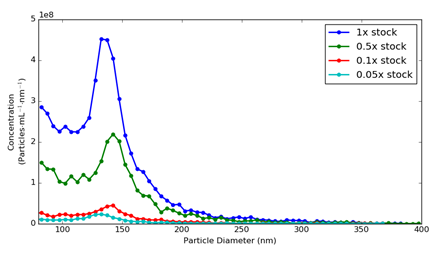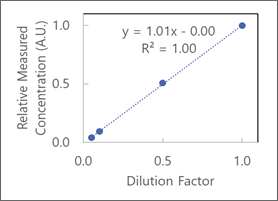

With the current COVID-19 outbreak, it is more critical than ever for scientists to rapidly and accurately quantify viral concentration for the research and development of vaccines, viral antigens and antiviral agents. Accurate concentration measurement of the virus particles is essential in the assessment of viral bioactivity and loading efficiency.
Back to table of contents
Conventional methods for quantifying virus such as live biological titer, fluorescent focus assay (FFA), quantitative polymerase chain reaction (qPCR) and enzyme-linked immunosorbent assay (ELISA) are time-consuming, labor intensive, and require large amount of sample volume. And optical particle counting techniques such as Nanoparticle Tracking Analysis (NTA)
don't have the sensitivity required to accurately count virus particles, since virus are much smaller than the optical diffraction limit and have low refractive index contrast relative to the surrounding aqueous medium.
In contrast (pun intended!), Spectradyne's nCS1TM instrument uses electrical sensing (non-optical) to detect virus particles in state-of-the-art disposable microfluidic cartridges. The system is practical and easy to use-delivering total virus count in minutes-and the microfluidic implementation requires only 3 microliters of sample for complete and accurate analysis, saving precious analyte volume. The electrical measurement does not require shining light through the sample, so virus can be quantified directly in complex biological samples such as cell culture media or plasma.
The microfluidic cartridges are single-use disposables, eliminating the risk of cross-contamination between samples and the time-consuming task of cleaning in between sample runs.
The precision in concentration measurement achievable in the nCS1TM is demonstrated in a serial dilution experiment shown to the right. The 4-point dilution series was performed on a retrovirus drug formulation for a gene therapy company.
The viral population was readily detected as a prominent peak over a broad background of other particles. The viral concentration decreases linearly as the dilution factor increases, as expected: Plotting the relative concentration measured across the entire range against the dilution factor, we get a correlation coefficient of 1.00.
The nCS1TM accurately quantitates virus particles in complex biological samples and exhibits highly linear response to concentration.
Spectradyne's technology is affordable, easy to use, and easy to adopt. Want to learn more about how it saves virologists time? Visit our virus applications page.
Please continue to follow our blog as we share insights, technical details, and generally geek-out with you about nanoparticle science!
Email us for more information, or to discuss your particular application directly.

Virus concentration measurement as a function of particle diameter, for different dilution levels.

This plot shows the scaling of measured viral concentration as a function of dilution, showing the expected unit scaling.